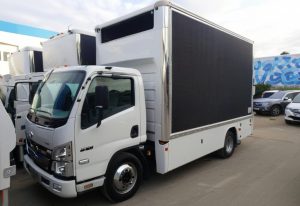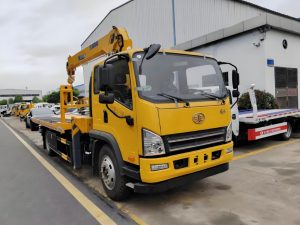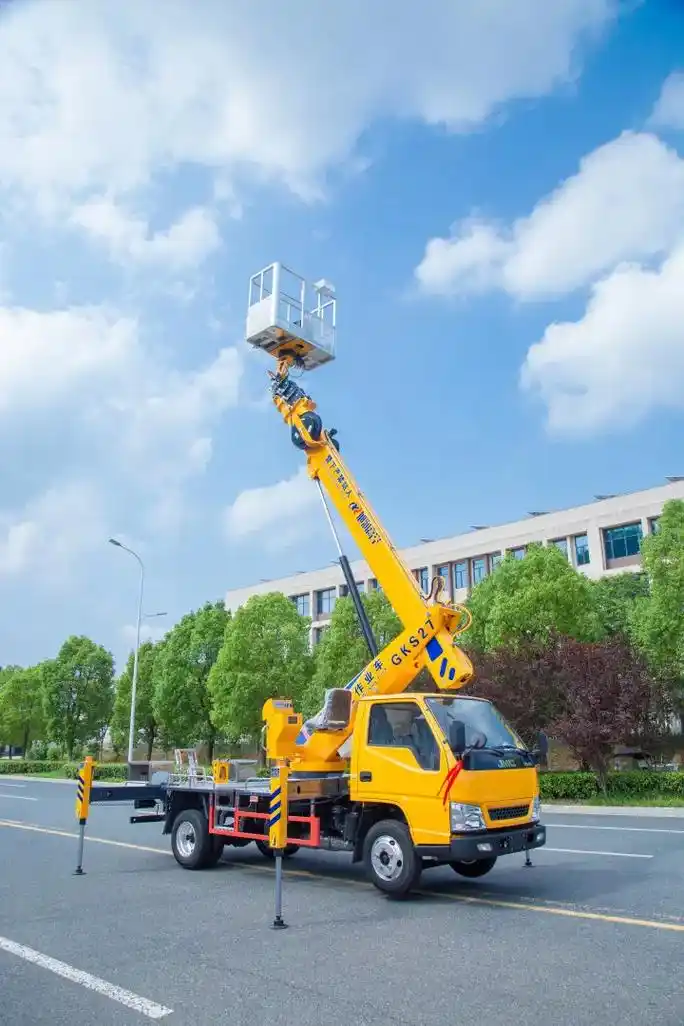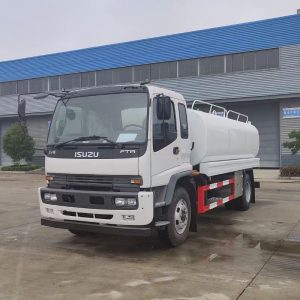Table of Contents
ToggleIntroduction
When you think about trucks, what comes to mind? Maybe the rumble of a powerful engine, the sight of a massive vehicle barreling down the highway, or the scent of diesel fuel in the air. But what if I told you there’s a type of truck that’s not just about raw power but also about versatility and adaptability? Welcome to the world of flatbed trucks! These trucks are the unsung heroes of the road, playing an essential role in transporting goods across industries. But what exactly is a flatbed truck, and why should you care?
A flatbed truck is a type of truck that features a flat, open bed without sides or a roof. This design is what gives these trucks their name and their defining characteristic. Imagine a giant, mobile platform that can be loaded and unloaded with ease. Whether it’s transporting construction materials, large machinery, or even lumber, flatbed trucks offer unmatched flexibility. So, buckle up as we dive into the fascinating world of flatbed trucks, where function meets form in the most practical way possible.

Understanding Flatbed Trucks
To truly appreciate flatbed trucks, we need to delve into their types and unique features. These trucks are not one-size-fits-all; they come in various configurations, each tailored to specific needs and industries.
Types of Flatbed Trucks
Flatbed trucks come in several types, each designed to handle different transport challenges. Here’s a quick rundown:
- Standard Flatbed Trucks: These are the most common type of flatbed trucks. They have a simple, flat surface that makes them ideal for general cargo. Their open design allows for easy loading and unloading from any direction, making them incredibly versatile.
- Step-Deck Flatbeds (or Drop Decks): These trucks have a lower deck height, which allows them to accommodate taller loads without exceeding standard height restrictions. The deck is divided into two levels, with the lower deck closer to the ground, making it perfect for transporting large machinery or construction equipment.
- Extendable Flatbeds: Need to transport something really long? Extendable flatbeds can be lengthened to accommodate oversized loads such as pipes, beams, or wind turbine blades. This adaptability is crucial for industries that deal with irregularly shaped or extremely long items.
- Double Drop Decks: These are similar to step-deck flatbeds but have an additional drop in the middle of the trailer. This design allows for transporting taller loads by lowering the center of gravity, which enhances stability during transit.
- RGN (Removable Gooseneck) Flatbeds: These are highly specialized flatbed trucks designed for heavy hauls. The gooseneck can be detached, allowing the front of the trailer to drop to the ground and create a ramp. This feature makes loading and unloading heavy equipment a breeze.
Key Features of Flatbed Trucks
What sets flatbed trucks apart from other types of trucks is their unique features. These features not only facilitate transportation but also ensure safety and efficiency.
- Open Design: The absence of sides or a roof allows for loading cargo from any angle, making the process quick and flexible. This feature is particularly beneficial for oversized or awkwardly shaped loads that wouldn’t fit in a traditional enclosed truck.
- Tie-Down Points: Safety is paramount when transporting goods. Flatbed trucks are equipped with numerous tie-down points, allowing for secure fastening of cargo. This prevents shifting during transit and ensures that the load arrives safely at its destination.
- Removable Side Racks: While flatbed trucks are typically open, some models come with removable side racks. These can be used to provide additional support for certain types of cargo, preventing them from sliding off during transport.
- Durability: Flatbed trucks are built to withstand heavy-duty tasks. Their robust construction ensures that they can handle significant weight without compromising safety or performance. This durability is key in industries where heavy and abrasive materials are the norm.
Benefits of Using Flatbed Trucks
So, why choose a flatbed truck over other types? The benefits are as broad as the loads they carry, offering both practical and economic advantages.
Versatility and Flexibility
Imagine having a vehicle that can handle a load of construction timber one day and a bulky piece of industrial machinery the next. That’s the beauty of flatbed trucks. Their open design means they can carry almost anything that can be loaded onto their flat surface. This versatility is why you’ll often see them in industries ranging from construction to agriculture. Think of a flatbed truck as a blank canvas, ready to be loaded with whatever your business needs to move.
Cost-Effectiveness
In a world where specialization often comes with a hefty price tag, flatbed trucks offer a refreshing dose of practicality. Because they can handle such a wide variety of loads, businesses often find that they don’t need to invest in multiple specialized vehicles. Instead, a single flatbed can serve multiple purposes, reducing overall fleet costs. Additionally, the efficiency in loading and unloading can lead to faster turnaround times, enhancing productivity and, ultimately, profitability.
Applications of Flatbed Trucks
Flatbed trucks are the Swiss Army knives of the trucking industry, seamlessly fitting into numerous sectors thanks to their adaptability and robust design. Let’s explore some key industries where flatbed trucks shine.
Construction Industry
In the construction world, efficiency is king. Every minute counts, and any delay can inflate costs significantly. This is where flatbed trucks come into play. They are perfect for hauling construction materials like steel beams, lumber, and heavy machinery directly to the site. Their open design allows loading and unloading from all angles, which is crucial when dealing with large and unwieldy items. Imagine trying to fit a puzzle piece into a constrained space—flatbed trucks remove those constraints, making the process smooth and hassle-free.
Agriculture Sector
Picture a sprawling farm needing to transport hay bales, tractors, or even livestock feeders across fields or between locations. A flatbed truck is an ideal solution for these tasks. Its flat surface can accommodate bulky agricultural equipment and produce, ensuring that everything reaches its destination safely. In essence, flatbed trucks are the workhorses of the agricultural sector, facilitating the efficient movement of goods and machinery essential for farming operations.
Transportation and Logistics
In the world of logistics, timing is everything. Delays can ripple through the supply chain, causing significant disruptions. Flatbed trucks play a crucial role in this sector by transporting oversized goods, machinery, and even shipping containers. Their ability to handle irregularly shaped or large loads makes them indispensable for logistics companies that need to deliver goods efficiently and on time. Think of flatbed trucks as the lifelines that keep the wheels of commerce turning smoothly.
Considerations When Choosing a Flatbed Truck
Selecting the right flatbed truck is crucial for optimizing transport operations. Here are some factors to consider to ensure you make the best choice for your needs.
Load Capacity and Size
One of the first things to consider is the load capacity and size of the flatbed truck. Overloading can lead to accidents or damage to the truck, while choosing a truck that’s too large can result in unnecessary fuel costs and inefficiencies. It’s essential to assess the typical size and weight of the loads you plan to transport and choose a flatbed that aligns with those requirements.
Material and Build Quality
The build quality and materials used in the construction of a flatbed truck can significantly impact its durability and longevity. High-quality materials and sturdy construction ensure that the truck can withstand the demands of heavy-duty transport tasks. This durability is particularly important for businesses that rely on their trucks for daily operations, as it reduces maintenance costs and downtime.
Maintenance and Safety Tips
Keeping a flatbed truck in top condition is key to ensuring safety and operational efficiency. Here are some maintenance and safety tips to keep in mind.
Regular Inspection and Maintenance
Like any vehicle, flatbed trucks require regular inspection and maintenance to function optimally. Routine checks can help identify potential issues before they become major problems, saving both time and money in the long run. Key areas to focus on include the brakes, tires, and engine, as these components are critical to the truck’s performance and safety.
Safety Practices for Drivers
Safety should always be a top priority, especially when dealing with heavy loads. Proper training for drivers on how to secure loads, handle the truck, and respond to emergencies is essential. Ensuring that drivers are familiar with safety practices can prevent accidents and ensure smooth operations. It’s like having a well-rehearsed team—everyone knows their role and executes it flawlessly.
Future Trends in Flatbed Trucking
As the world evolves, so too does the trucking industry. Flatbed trucks are at the forefront of several exciting trends that promise to enhance their efficiency and sustainability.
Technological Innovations
Technology is transforming the trucking industry, and flatbed trucks are no exception. Innovations such as GPS tracking, automated load management systems, and advanced telematics are becoming increasingly common. These technologies enhance efficiency by providing real-time data, optimizing routes, and improving load management. It’s like having a digital co-pilot, helping to navigate the complexities of modern transport.
Environmental Considerations
In an era where sustainability is increasingly important, the trucking industry is looking for ways to reduce its environmental impact. Flatbed trucks are being reimagined with greener technologies, such as electric and hybrid models, which reduce emissions and improve fuel efficiency. These advancements not only benefit the environment but also offer cost savings for businesses by reducing fuel consumption and maintenance costs.
Conclusion
In conclusion, flatbed trucks are indispensable in various industries, thanks to their versatility, cost-effectiveness, and adaptability. Whether you’re hauling construction materials, agricultural products, or oversized goods, these trucks offer a reliable solution. As technology advances and environmental consciousness grows, the future of flatbed trucking looks promising. So, next time you see a flatbed truck on the road, you’ll know just how vital it is to keeping the wheels of industry turning.







